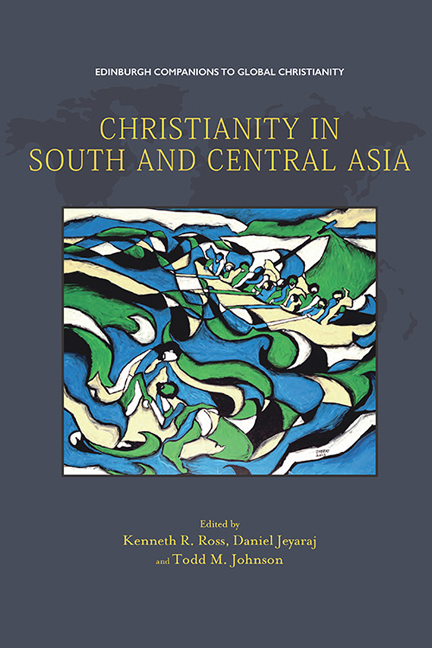A Demographic Profile of Christianity in South and Central Asia
Published online by Cambridge University Press: 30 April 2020
Summary
South and Central Asia is home to a signifi cant amount of religious diversity, with Muslim-majority, Hindu-majority and Buddhist-majority countries, plus regions that are majority Christian and ethnoreligionist. of the region's six major religions, Muslims experienced the fastest growth between 1970 and 2015.
Christianity has a long history in south and Central Asia. The Mar Thoma syrian Church in Kerala, india, dates to the missionary activity of Thomas the Apostle in the fi rst century ce. Areas of Central Asia had fl ourishing Christian communities several centuries before parts of Europe.
After the eighth-century rise of islam in south and Central Asia, Christianity became a minority religion and continues as such in the region today (representing 4% of the population in 2015). No country contains a Christian majority and most are less than 10% Christian. Kazakhstan had the highest percentage of Christians in 2015, at 26%. Most Christian communities in the region struggle to maintain members (Afghanistan, iran, Kyrgyzstan, Tajikistan), though there are notable exceptions. Nepal experienced tremendous growth in its Christian population between 1970 and 2015, from less than 8,000 (<1%) to over 1 million (4%).
Major Christian Traditions, 1970 and 2015
Christianity in South and Central Asia has always been, and remains, rather diverse. The region is home to historic Catholic and Orthodox populations as well as newer Protestant and Independent churches. Independents grew the fastest between 1970 and 2015, from 4 million to 21 million.
Christians, 1970–2015
The very modest increase of Christianity in the region has occurred since at least the beginning of the twentieth century, when Christians represented 1.5% (5.2 million) of the population. By 1970 Christians were 3.5% (27 million) of the population, and by 2015 they were 4.0% (75 million). Losses in Central Asia are mostly offset by small gains in South Asia due to conversion.
Religious affiliation, 1970 and 2015
South and Central Asia is a very religiously diverse region. Between 1970 and 2015, Hindus and Buddhists decreased proportionally with the proportional increase of Muslim and Christian populations. Agnostics and atheists were 2.4% of the population in 1970 but had declined to 1.1% by 2015 with the collapse of communism in Central Asia.
- Type
- Chapter
- Information
- Christianity in South and Central Asia , pp. 3 - 14Publisher: Edinburgh University PressPrint publication year: 2019

